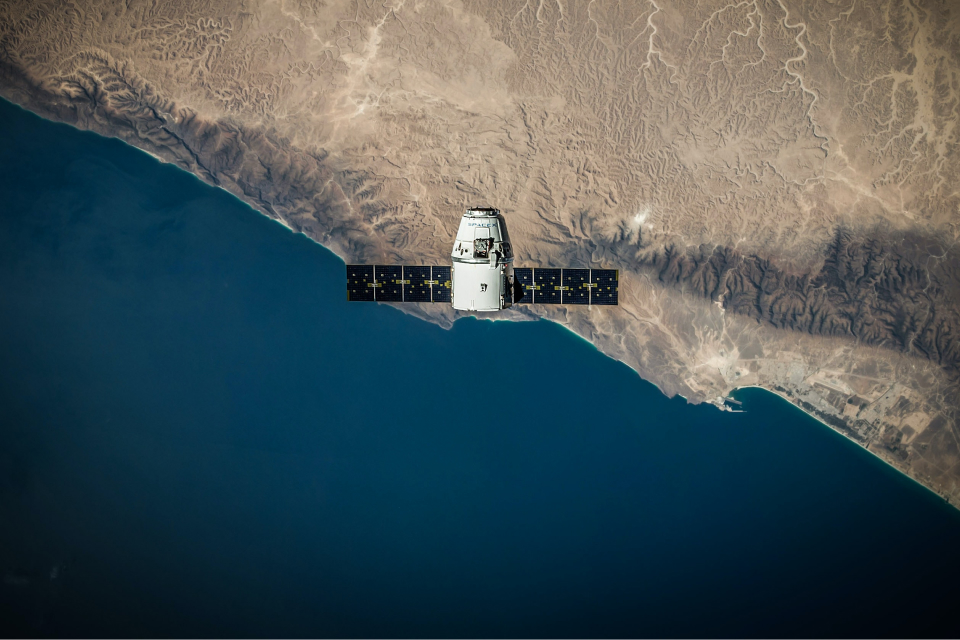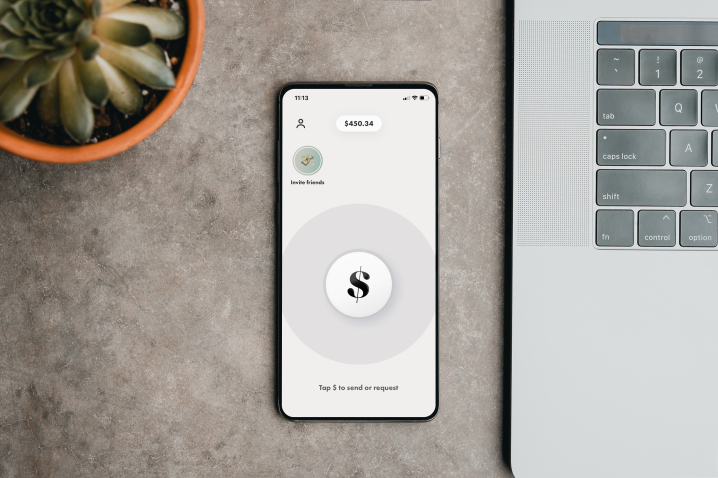The Union Cabinet approved the Production Linked Incentive Scheme 2.0 for Information Technology Hardware (PLI 2.0 for IT hardware) on 17 May 2023[i] and the Ministry of Electronics and Information Technology (MeitY) notified it on 29 May 2023[ii]. PLI 2.0 for IT hardware comes after the success of the Production Linked Incentive Scheme for Large Scale Electronics which focused on boosting mobile manufacturing in India.[iii] The intent of this second iteration of the scheme is to boost manufacturing of laptops, tablets, all-in-one personal computers, servers, and Ultra Small Form Factor (USFF). It also aims to position India as a global electronics system design and manufacturing (ESDM) hub as envisioned in the National Policy for Electronics, 2019[iv] and MeitY’s vision document.[v] Expected incremental production is valued at Rs. 3.35 lakh crores and expected investments are valued at Rs. 2,430 crores from the scheme. It is also likely to create 75,000 jobs.
The government notified this second iteration of the scheme after receiving a lukewarm response to the first version of this PLI .[vi] Companies like Dell, ICT Service (Wistron), Lava, Dixon, Rising Stars Hi-Tech (Foxconn), Netweb Technologies, Optiemus Electronics and VVDN Technologies were participants under the original PLI .[vii] Several IT hardware manufacturers had raised concerns about the investment criteria for participation under the first version as many of them had already made investments in infrastructure which were underused due to decreased demand during the pandemic.[viii]
The government intends to attract global companies like HP and Apple through PLI 2.0 for IT hardware.[ix] It also seeks to address challenges faced in IT hardware manufacturing including inadequate infrastructure, domestic supply chain and logistics; high cost of finance; inadequate availability of quality power; limited design capabilities and focus on research and development by the industry; and inadequacies in skill development.[x] While there have been concerns raised in the past about the timeline for implementation of the PLI,[xi] the Indian government believes that the scheme will still present opportunities for India due to the current geo-political situation[xii]. The strained trade relations between the United States of America and China presents an opportunity for India to scale electronics manufacturing as major global countries are adopting the ‘China Plus One’ strategy.[xiii]
India’s manufacturing aspirations: The domestic production of electronic goods increased from INR 3,17,331 crores (USD 49 billion) in 2016-17 to INR 6,40,810 crores (USD 87.1 billion) in 2021-22 with compound annual growth rate of 15%. Further, India’s share in global electronics manufacturing has also increased to 3.75% in FY 2021-22 from 1.2% in 2014. Even with the increase in share, it remains miniscule for a country hoping to be the manufacturing jurisdiction of choice under the China Plus One strategy. The laptop and tablet demand in India was largely met through imports valued at USD 7.416 billion and USD 0.597 billion respectively in 2021-22.[xiv] India intends to address this through the PLI 2.0 for IT hardware and expand its electronics manufacturing and exports sector to USD 300 billion by 2026.[xv]
What does PLI. 2.0 for IT hardware cover?
A. Target segment: The target segment includes (i) laptops, (ii) tablets, (iii) all-in-one personal computers, (iv) servers, and (v) USFF.[xvi] USFF is a new addition in the PLI 2.0 for IT hardware which was not covered under the first PLI.
B. Tenure:[xvii] The tenure is 6 years. Applications will be open till 15 July 2023 which may be extended at the discretion of the government. The government may also decide to reopen applications based on the response at any time. Applicants who apply after the initial application timeline will only be eligible for benefits earmarked for the remaining tenure.
C. New categories: This PLI includes three categories of companies, global, domestic, and hybrid (global/domestic). The eligibility of applicants under the hybrid category will be decided based on the type of company i.e., domestic or global.[xviii]
D. Eligibility: Eligibility criteria includes:

† In INR crores
* Owned by resident Indian citizens as defined in the FDI Policy Circular of 2020.[xix]
1. Each applicant can apply only once.[xx] Any company registered in India can apply.[xxi]
2. Applicants of the existing PLI for IT hardware, who have not claimed any incentive, can participate in PLI 2.0 for IT hardware.[xxii] If incentives have been claimed, then they can participate for the next year for which incentive has not been claimed, provided the applicants are selected. The investments during tenure of existing PLI for IT hardware will be considered under the new PLI. [xxiii]
3. Investment made in contract manufacturing facilities will also be considered as investments for the purpose of the scheme.[xxiv] Incremental investment by manufacturers of components/sub-assemblies for meeting the yearly thresholds can be considered provided the manufacturer is exclusively manufacturing components/sub-assemblies for the applicant.[xxv]
4. If there is a shortfall in investment (not more than 40%) (consider is ‘x’), the incentive will be x/2 % less. However, if cumulative investment targets are achieved in subsequent years, then the held back amount will be released without interest. [xxvi]
5. Applicants must also provide the estimated PLI amount for each year based on their incremental sales commitments and expected percentage incentive which depends on company’s localization plan and baseline sale.[xxvii]
6. Beneficiaries under the scheme must use firmware for servers certified by MeitY.[xxviii] Rajeev Chandrasekhar, Minister of State, MeitY said that the requirement of using certified firmware is to ensure that the entire system including hardware and firmware is trustworthy.[xxix]
E. Incentive outlay: The cumulative outlay is INR 16,939 crores for 6 years. The outlay in PLI for IT hardware was INR 7,325 crores for 4 years. The yearly split is:[xxx]

1. Date of commencement of manufacturing: The incentives have been laid out under the assumption that manufacturing will begin on 1 July 2023 by all applicants. The outlay may change if applicants choose to begin manufacturing later.[xxxi]
2. Incentives based on net incremental sales: The incentive per company will be based on net incremental sales of manufactured goods (covered under the scheme) subject to ceiling of INR 4,500 crores for global companies, INR 2,250 crores for hybrid companies, and INR 500 crores for domestic companies which is disbursed at the end of the financial year.[xxxii] There may be additional incentives disbursed on a pro rata basis if there are unutilized incentive funds.[xxxiii]
3. Penalties: Penalties of 5% and 10% are applicable if there is a shortfall of 25% – 50% and more than 50% respectively in estimated amounts submitted in the applications.[xxxiv]
4. Computation and base year: Computation will be based on details furnished by applicants to the government.[xxxv] For qualification criteria, FY 2021-22 shall be considered irrespective of year of participation. The base year will be determined thus: [xxxvi]

5. However, for the first year of incentive, eligible sales will be considered for 9 months starting from 1 July 2023, for which incentive is being claimed. The baseline sales will be considered for the corresponding period of FY 2022-23. In case applicants choose to start manufacturing later the baseline sales will be computed based on the later date.[xxxvii]
6. Quantum of incentive: PLI 2.0 for IT hardware will extend an average incentive of 5% for localisation of certain items. The applicants must localise PCBA and assembly during the first year. At least one component or sub-assembly needs to be added every year from the list of optional components and sub-assemblies provided. Components and sub-assemblies such as SSD, memory module, and display panel are also part of localisation. Higher incentive has been provided to incentivize manufacturing of Semiconductors in India. Incentives for localization will taper down every year.[xxxviii]
7. Disbursement of incentives: Incentives will be disbursed if applicants meet the eligibility thresholds.[xxxix] The government will extend its support for 6 years from 1 July 2023 or 1 April 2024 as opted by the applicant.[xl]
F. Nodal agency and empowered group of secretaries: The Industrial Finance Corporation of India Ltd. has been notified as the nodal agency for PLI 2.0 for IT hardware. It is responsible for secretarial, managerial and implementation support and assisting MeitY.[xli] The empowered group of secretaries will oversee the overall progress of the scheme. It is also empowered to revise incentive rates, target segments, list of items for localization, and eligibility criteria among others.[xlii]
G. Amendments and Guidelines: MeitY will release the guidelines once it is approved by Ashwini Vaishnaw, Minister for Information Technology.[xliii] The guidelines will cover constitution, functioning and responsibilities of the nodal agency.[xliv] It will also cover the methodology for selection of applicants[xlv] and disbursement of incentives.[xlvi]
H. Industry reactions: The industry reactions to the PLI 2.0 for IT hardware are largely positive. Dixon technologies is looking to make an investment of INR 250 crores or more, over the next six years, under the scheme.[xlvii] Optemius Technologies and HP India are actively evaluating the scheme and its benefits.[xlviii] Reportedly, Apple may not apply for the scheme and will continue to focus on increasing mobile manufacturing.[xlix] However, Ashwini Vaishnaw, Union Minister, MeitY, said that personal computer makers like HP, Dell, Acer and Asus are happy with Indian policies.[l] Rajeev Chandrasekhar, Minister of State, MeitY said that the scheme is receiving a lot of interest from Indian IT hardware companies.[li] Pankaj Mohindroo, Chairman of the India Cellular and Electronics Association (ICEA) said that the scheme will “not only foster domestic manufacturing but also benefit major global manufacturers of IT hardware products such as laptops and tablets.”[lii] Sanjay Agarwal, the President of the Electronic Industries Association of India (ELCINA) and Ali Akhtar Jafri, Director General of the Manufacturing Association for Information Technology (MAIT) believe that the PLI 2.0 for IT hardware will help India emerge as a hub for IT hardware manufacturing and increase the country’s exports.[liii]
Is PLI a golden arrow for increasing exports in India?
As the industry and government celebrate the PLI paradigm’s successes, other voices are less convinced. Raghuram Rajan, former Governor of the Reserve Bank of India, released a piece on the limited value of PLI schemes as an indicator of India’s manufacturing prowess.[liv] He argued that PLI schemes must be assessed from the view of how much actual “manufacturing” (as opposed to ”assembly”) has happened in India, the employment generated, as well as the long-term stickiness of the investments made (i.e. whether global electronics major shift their supply chains to India). Among other concerns, he also questioned whether incentives to the largest electronics companies in the world was the best use of public funds.
Interestingly, in the wake of his queries, the government is reportedly reviewing [lv]existing PLI schemes which aren’t seeing the same level of success as the electronics PLI[lvi].
Mr. Chandrasekhar, in a reply to Mr. Rajan’s piece, argued, among others, that assembly was the first step towards manufacturing, only ~20% of the USD 44 million worth of mobile phones produced were eligible for PLI incentives, and that the data used for the first piece was deliberately misleading.[lvii]
The question raised remain: is PLI the best way to solidify India’s manufacturing revolution?
Read the PLI 2.0 for IT hardware here.
Read the PLI for IT hardware here.
Read the PLI for Large Scale Electronics Manufacturing here.
This post has been authored by Isha Mital, Senior Associate and Neeraja Seshadri, Associate with inputs from Nehaa Chaudhari, Partner , Aman Taneja, Principal Associate and Rutuja Pol, Principal Associate.
Image credits: Getty images
We will update this post once the PLI 2.0 for IT hardware’s guidelines are notified. For more on the topic please reach out to us at contact@ikigailaw.com
[i] PIB Delhi, Cabinet approves Production Linked Incentive Scheme – 2.0 for IT Hardware, Press Information Bureau, 17 May 2023, https://pib.gov.in/PressReleaseIframePage.aspx?PRID=1924766.
[ii] The Gazette of India, Production Linked Incentive Scheme – PLI 2.0 for IT Hardware, Notification by the Industrial Promotion – Electronics Hardware Manufacturing (IPHW) division of the Ministry of Electronics and Information Technology, 29 May 2023, https://www.meity.gov.in/writereaddata/files/Production%20Linked%20Scheme%202.0%20for%20IT%20Hardware%20notification_0.pdf.
[iii] The Gazette of India, Production Linked Incentive Scheme for Large Scale Electronics Manufacturing, Notification by the IPHW division of the Ministry of Electronics and Information Technology, 1 April 2020, https://www.meity.gov.in/writereaddata/files/production_linked_incentive_scheme.pdf; PLI scheme for mobile phones has been the most successful: Govt, CNBC TV, 21 December 2022,
[iv] The Gazette of India, National Policy on Electronics, Notification by the IPHW division of the Ministry of Electronics and Information Technology, 25 February 2019, https://www.meity.gov.in/writereaddata/files/Notification_NPE2019_dated25.02.2019.pdf.
[v] $300 Bn Sustainable Electronics Manufacturing & Exports By 2026, Roadmap and Strategies (Vision Document Volume 2), https://static.pib.gov.in/WriteReadData/specificdocs/documents/2022/jan/doc20221247801.pdf.
[vi] Ravi Dutta Mishra, PLI Scheme for IT hardware reworked after lukewarm response from firms, Livemint, 25 December 2022, https://www.livemint.com/economy/pli-scheme-for-it-hardware-reworked-after-lukewarm-response-from-firms-11671987552023.html.
[vii] List of companies approved under the PLI Scheme for IT Hardware, Notification by the IPHW division of the Ministry of Electronics and Information Technology, https://www.meity.gov.in/writereaddata/files/List%20of%20Companies%20under%20PLI%20IT-HW.pdf
[viii] Gulveen Aulakh and Ravi Dutta Mishra, IT hardware firms request changes in govt’s PLI scheme, Livemint, 14 December 2022, https://www.livemint.com/companies/news/it-hardware-firms-request-changes-in-govt-s-pli-scheme-11671036132830.html.
[ix] Jatin Grover, IT hardware PLI to be made more attractive, Financial Express, 4 April 2023, https://www.financialexpress.com/industry/it-hardware-pli-to-be-made-more-attractive/3032402/.
[x] Para 1.7
[xi] Rishi Raj, Global IT majors urge govt. to defer hardware PLI 2.0, Financial Express, 21 October 2022, https://www.financialexpress.com/industry/global-it-majors-urge-govt-to-defer-hardware-pli-2-0/2722933/.
[xii] Para. 1.6
[xiii] Kirti Jha, What is China Plus One Strategy? MintGenie Explains, mintgenie, 8 November 2022, https://mintgenie.livemint.com/news/markets/what-is-china-plus-one-strategy-mintgenie-explains-151661256972449.
[xiv] Para 1.2
[xv] PIB Delhi, Ministry of Electronics & IT releases 2nd Volume of Vision Document on Electronics Manufacturing, Press Information Bureau, 24 January 2022, https://pib.gov.in/PressReleasePage.aspx?PRID=1792189.
[xvi] Para. 4
[xvii] Para. 6
[xviii] Para. 5
[xix] Annexure A
[xx] Para. 5.1
[xxi] Para. 10.1
[xxii] Para. 5.1.1
[xxiii] Para. 5.1.2
[xxiv] Para. 5.2.2
[xxv] Para. 5.2.3
[xxvi] Para. 5.2.4
[xxvii] Para. 5.3
[xxviii] Para. 5.4
[xxix] Deepsekhar Choudhary, PM Modi wants to do in 10 years what China did in 30 years in electronics manufacturing: Rajeev Chandrasekhar, Moneycontrol, 12 June 2023, https://www.moneycontrol.com/news/business/startup/pm-modi-wants-to-do-in-10-years-what-china-did-in-30-years-in-electronics-manufacturing-rajeev-chandrasekhar-10781871.html.
[xxx] Para. 8
[xxxi] Para. 8.1 Note 1
[xxxii] Para 8.2
[xxxiii] Para. 8.4
[xxxiv] Para. 8.3
[xxxv] Para 9.1
[xxxvi] Para. 7
[xxxvii] Para. 8.1 Note 2
[xxxviii] Para. 3 read with Annexure B
[xxxix] Para. 10.3
[xl] Para. 10.4
[xli] Para. 11.1
[xlii] Para. 12.2
[xliii] Para. 13 and 14
[xliv] Para. 11.1
[xlv] Para. 5
[xlvi] Para. 8.4
[xlvii] HP, Optiemus evaluating options after IT hardware PLI scheme 2.0, ET Telecom, 18 May 2023, https://telecom.economictimes.indiatimes.com/news/devices/global-it-hardware-makers-should-use-pli-2-0-opportunity-industry/100304530
[xlviii] Ibid.
[xlix] Ayushi Kar, Budgetary outlay. Apple may not apply for PLI scheme for IT hardware, The Hindu Businessline, 2 June 2023, https://www.thehindubusinessline.com/info-tech/apple-may-not-apply-for-pli-scheme-for-it-hardware/article66919111.ece.
[l] S Ronendra Singh, New opportunity. IT Hardware PLI 2.0: Cabinet approves ₹17,000 crore with higher incentives, The Hindu businessline17 May 2023, https://www.thehindubusinessline.com/info-tech/it-hardware-pli-20-cabinet-approves-17000-crore-with-higher-incentives/article66862169.ece.
[li] Deepsekhar Choudhary, PM Modi wants to do in 10 years what China did in 30 years in electronics manufacturing: Rajeev Chandrasekhar, Moneycontrol, 12 June 2023, https://www.moneycontrol.com/news/business/startup/pm-modi-wants-to-do-in-10-years-what-china-did-in-30-years-in-electronics-manufacturing-rajeev-chandrasekhar-10781871.html.
[lii] Industry lauds PLI 2.0 for IT hardware to boost laptop, tablet manufacturing, The Statesman, 18 May 2023, https://www.thestatesman.com/technology/industry-lauds-pli-2-0-for-it-hardware-to-boost-laptop-tablet-manufacturing-1503182300.html.
[liii] Nitisha Dubey, ELCINA Welcomes Govt. Announcement of PLI Scheme 2.0 for IT Hardware, BISinfotech, 18 May 2023, https://www.bisinfotech.com/elcina-reacts-on-govt-pli-scheme-2-0-for-it-hardware/; HP, Optiemus evaluating options after IT hardware PLI scheme 2.0, ET Telecom, 18 May 2023, https://telecom.economictimes.indiatimes.com/news/devices/global-it-hardware-makers-should-use-pli-2-0-opportunity-industry/100304530.
[liv] Rahul Chauhan, Rohit Lamba and Raghuram Rajan, Has India really become a mobile phone manufacturing giant?, LinkedIn, June 2023, https://www.linkedin.com/feed/update/urn:li:activity:7068837851085340673/.
[lv] Shreya Nandi, In a first, Centre to review PLI scheme to sort out teething issues, Business Standard, 11 June 2023, https://www.business-standard.com/economy/analysis/govt-to-review-pli-schemes-to-sort-teething-issues-seek-feedback-123061100469_1.html.
[lvi] Ravi Dutta Mishra, Govt may consider course correction for 6 PLI schemes on slow track, Live Mint, 13 June 2023, https://www.livemint.com/economy/union-government-to-review-pli-scheme-progress-assess-need-for-course-correction-in-six-sectors-11686678085735.html
[lvii] Rajeev Chandrasekhar, My response to Raghuram Rajan’s LinkedIn post ”Is India Really Manufacturing Mobile Phones?” LinkedIn, June 2023, https://www.linkedin.com/feed/update/urn:li:activity:7075104016266838016/.
[All links were last accessed on 22 June 2023]










